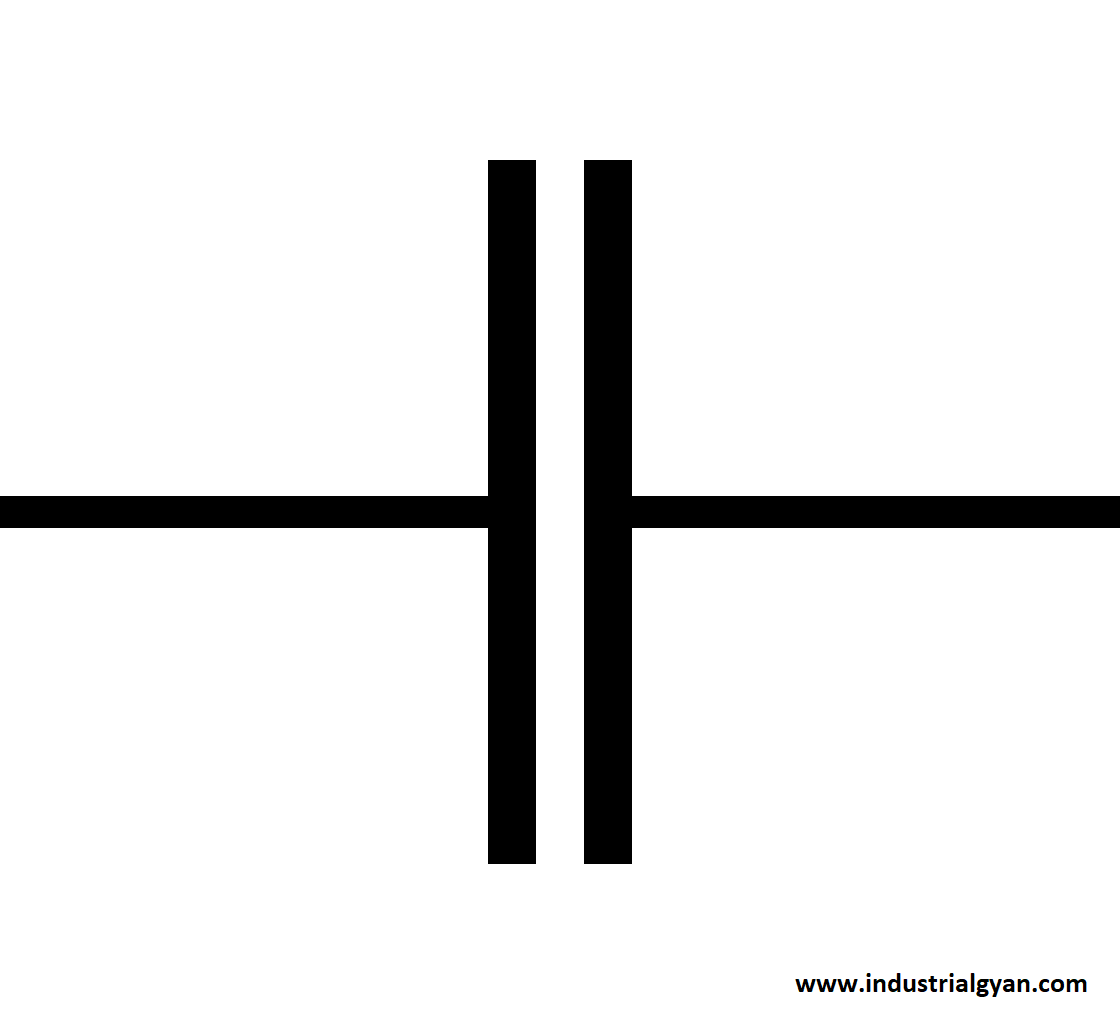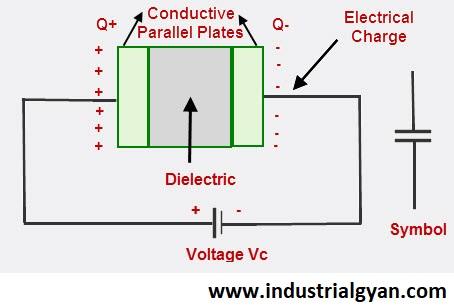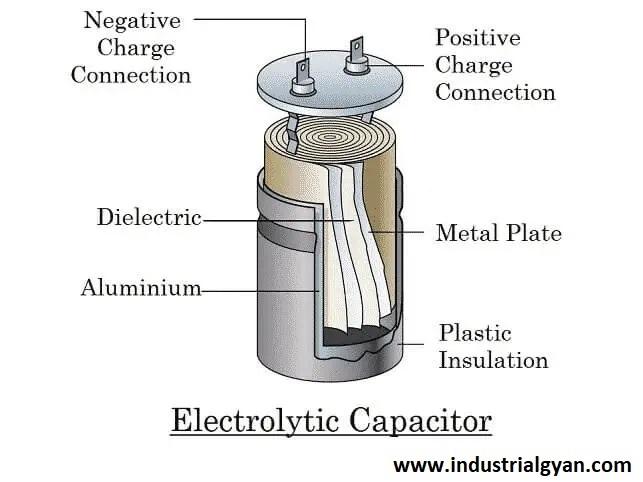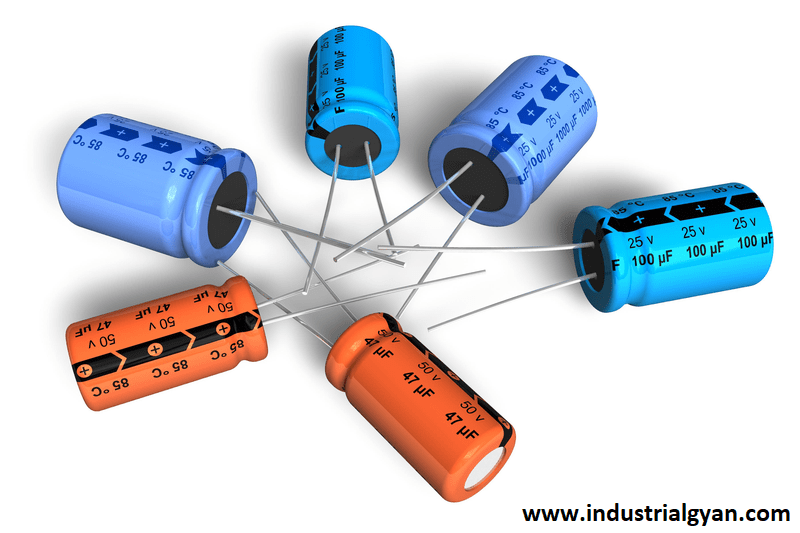Hello guys, today we are discussing the topic of the principle of capacitors, the working of the capacitors, the types of capacitors, and the advantages, and disadvantages of the capacitors in brief.
The capacitor is an electrical device widely used in an appliance. It helps in-store charge inside it and provides when the appliance requires it, signal filtration, signal processing. The SI unit of stored charge inside the capacitor is FARAD.
What are Capacitors? You should know about this.
The capacitor is high effective role-play in electrical appliances because it stores the charge inside it with the help of two plates. the dielectric strength in between the two plates is required on the desirable value because no direct charge flows through in the two plates.
The capacitor is widely utilized in various electrical appliances for a multitude of purposes such as boosting power flow, signal filtration, electrical signal processing, and more. The capacity of the capacitor to store charge is measured in farads (F). However, the capacitance of a capacitor is determined by a variety of factors including the symbol capacitor is F.

Symbol of capacitor
1)type and thickness of the dielectric material
2)the distance between the plates.
3)the size of the capacitor’s plates.
In addition to its various applications in electrical appliances, the capacitor is also employed in single-phase motors, flashlights, fluorescent lights, electrical motors, audio devices, and more.

- Aluminum electrolytic capacitors.
- Film capacitors.
- Ceramic capacitors.
- Tantalum capacitors.
- Supercapacitors.
- Variable capacitors.
Aluminum electrolytic capacitors:-
Aluminum electrolytic capacitors are most used for a high value of charge stored in capacitors required. it is made up of aluminum foil electrodes, and oxide with solid or liquid for the dielectric strength between the two plates.

Film capacitors:-
This type of capacitor has a mostly thin film of metal or plastic. the major advantage is the low dissipation factor stability such as audio systems and power supplies. the value of the capacitor such as voltages.
Ceramic capacitors:-
In have used material is ceramic for increasing the dielectric strength between the plates. basically is very effective and also very affordable in cost. they are a wide range available in capacitance ratings.
Tantalum capacitors:-
these capacitors’ plates are made up of tantalum metal oxide and solid tantalum oxide for the dielectric strength between the plates. the capacitors are most commonly used in the high capacity and more stability required. they are used like our hospitality and military hardware, etc.
Supercapacitors:-
Supercapacitors are used to store a high amount of energy to stored inside compared to the other types of traditional capacitors. It delivers a high amount of charge and quick discharge. it is mostly used in electrical vehicles (EVs) and power systems.
Variable capacitors:-
In these types of capacitors moving plates are for adjusting the capacity of the capacitors. it is mostly used in domestic appliances like radio tuning and signal filtration processes. it is known as variable capacitors.

Principle of the capacitors:-
- The capacitors are for storing energy by using the two plates and dielectric in between the plates. the metal plates behave as an electrode and the dielectric works as insulation in between the plates for direct charge flow between plates.
- when the plates connect with the input power supply started the charge buildup in the plates. the stored energy directly proportional to the electric field. the amount of energy stored charge for the given voltage.
- When the voltage on both terminals of the body reaches the maximum value the charge storing stops. the electric field remains constant between the terminal of the capacitors.
- The stored energy can release by just removing the voltage supply from the terminal.
- But from a practical viewpoint, the capacitor is used to charge temporarily and is released to the appliances when required for the desired operation performed. It is the principle of the capacitors
Advantages of the capacitors:-
- It is the best option for storing a high amount of electrical energy for a short time period.
- The capacitor is can be used for the filtration of the electrical signal or smoothing and boosting the signal in terms of voltage or current.
- It helps in the coupling of the signal from one stage to another stage without changing DC biased signal.
- To help in the correction of the electrical power factor efficiency. it helps in energy savings technology.
- small and lightweight easy to convenient setup in the circuits.
- for more information click here.
Disadvantages:-
- small energy stored major problem in the capacitors.
- capacitors have specific voltage limits, more than the limit it may have a chance to explode.
- Capacitors deteriorate over a time period is known as aging.
Reference:-

I am a highly motivated and skilled individual with a passion for Electrical engineering. I have 1 year of experience in Robotics and Electrical engineering, which has allowed me to develop a strong set of skills in PLC, Painting Robots, SCADA. I am a quick learner and am always looking for new challenges and opportunities to expand my knowledge and skills. I am a team player and enjoy working with others to achieve a common goal. Successfully completed many projects for a various clients in the automobile sector.
Thank You

